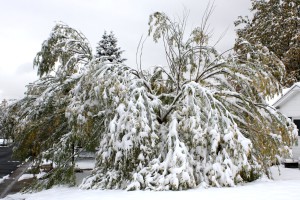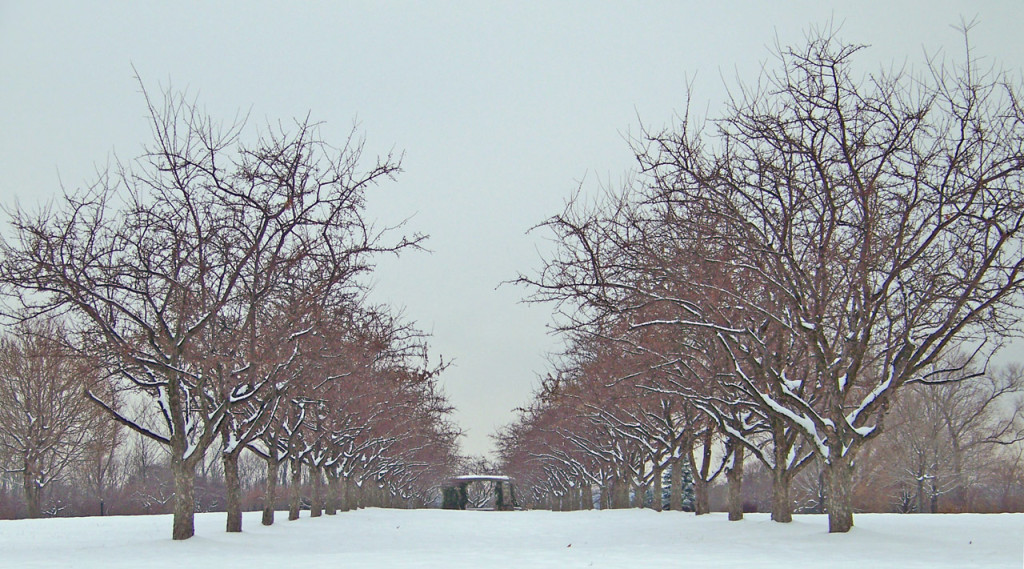Snow & Wind Can Devastate Trees
SNAP!

That’s often the only noise we hear outside in the quite of heavy-falling snow. It’s the sad sound of a tree branch breaking or worse yet, the side of a tree splitting and falling over.
This is the devastation we experience during those heavy spring snows like the one this week along Colorado’s Front Range. Especially in neighborhoods and parks with more mature trees, it’s common to see broken and fallen limbs and others that are barely hanging on. Then, back-to-back storms mean more wind that could break off those heavy hanging limbs or push over shallow-rooted trees when the soil is saturated from snow melt.
Springtime in the Rockies definitely has its challenges. We’ll never control Mother Nature, but we can clean up the mess, do our best to care for our damaged plants and plan ahead to cut future losses.
Clean-Up Tips
Make safety No. 1. If dangling limbs hang over a sidewalk, parking space or driveway, deal with them ASAP. Falling branches can cause serious injury and property damage.
Call in a Pro. Think twice about making it a DIY project. If you have to be on a ladder and underneath part of the branch to saw it off, hire a pro who has the equipment, safety gear and know-how to prune both correctly and safely.
Recycle debris. Post-storm clean-up can create a lot of debris. If you hire a tree service to prune, they will remove the debris. For DIY projects, look for nearby recycling locations that accept green waste or contact your municipality to see if they are accepting storm debris for recycling.
Cut Future Losses
Prune trees prior to winter snows. Trees that have not had their crowns properly thinned, or trees that naturally have more branches and twigs, will catch and hold more snow than thinner trees.
In those early fall or spring snows when there are leaves on the trees, even more snow will cling to these trees causing them to bend low to the ground or snap. For these trees, the wind will be blowing more against them than through them making damage more likely. That is why pruning helps to cut the damage losses.
Watch out for leaning trees. Trees that are already leaning are more likely to blow over than upright trees. If they are a hazard to traffic or property, consider removing them.

Think about where to plant a tree
- Wind: If you live in a windy area, consider placing trees on the east side of the property which is generally more protected from winds.
- Slopes: Trees on slopes that face away from the wind are more likely to blow over.
- Small spaces: Trees planted in small areas, such as between a sidewalk and a curb, have little space for roots to spread and take hold. When selecting trees for tight areas, get guidance on trees best suited to these spaces.
Our trees are the most expensive plant investment in our landscapes – and they appreciate in value over time. Caring for them properly brings a return on investment for years to come.



